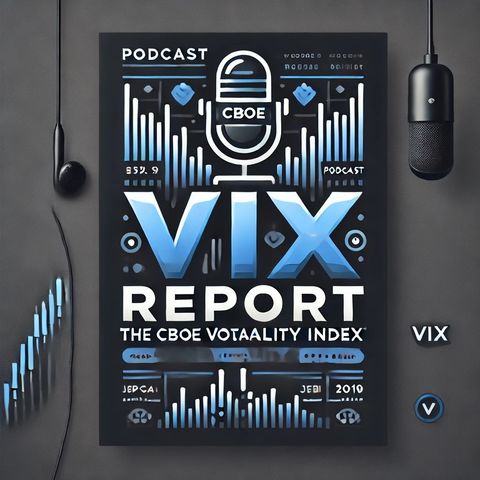Understanding the "Fear Index": Decoding the Volatility in the S&P 500 Market

Download and listen anywhere
Download your favorite episodes and enjoy them, wherever you are! Sign up or log in now to access offline listening.
Understanding the "Fear Index": Decoding the Volatility in the S&P 500 Market
This is an automatically generated transcript. Please note that complete accuracy is not guaranteed.
Description
The Cboe Volatility Index (VIX) is a critical financial metric that provides insight into investors' expectations of near-term market volatility, specifically over the next 30 days. Often dubbed the "fear...
show more## What the VIX Represents
The VIX is designed to estimate the 30-day expected volatility of the S&P 500 Index, based on the prices of SPX option contracts. It captures market sentiment, reflecting the collective market expectation of volatility stemming from economic indicators, geopolitical events, and overall investor sentiment.
## Factors Influencing VIX Movements
### Market Uncertainty
One of the most significant drivers of the VIX is market uncertainty. When investors anticipate higher volatility due to factors such as economic instability, geopolitical tensions, or major financial events, the VIX tends to rise. Conversely, during periods of market calm and economic stability, the VIX generally falls. This responsiveness makes the VIX an effective gauge of market sentiment.
### Portfolio Hedging
The VIX is inversely related to the S&P 500 Index. As a result, VIX levels typically increase when the S&P 500 declines, making VIX futures and options valuable for hedging against downturns in the broader market. Investors often turn to VIX derivatives as a form of insurance against market declines, contributing to increased demand and higher VIX levels during turbulent times.
### Term Structure and Mean Reversion
Volatility is mean-reverting, meaning it tends to move towards a long-term average over time. This characteristic influences the term structure of VIX futures, which usually exhibit a contango pattern—where futures prices for longer maturities are higher than those for nearer maturities. Traders can exploit this mean-reverting tendency through various strategies, including term structure trading and volatility arbitrage.
### Risk Premium Yield
The VIX encapsulates the risk premium embedded in option prices. Historically, the implied volatility derived from these options has exceeded the subsequently realized volatility, suggesting that options are often priced with a higher level of uncertainty than is ultimately experienced. This discrepancy creates a premium that can be targeted through volatility arbitrage strategies, where traders seek to profit from the difference between implied and realized volatility.
## Practical Applications and Economic Insights
The VIX serves multiple functions in both trading and economic analysis. For traders, VIX futures
Information
| Author | QP-1 |
| Organization | William Corbin |
| Website | - |
| Tags |
Copyright 2024 - Spreaker Inc. an iHeartMedia Company
